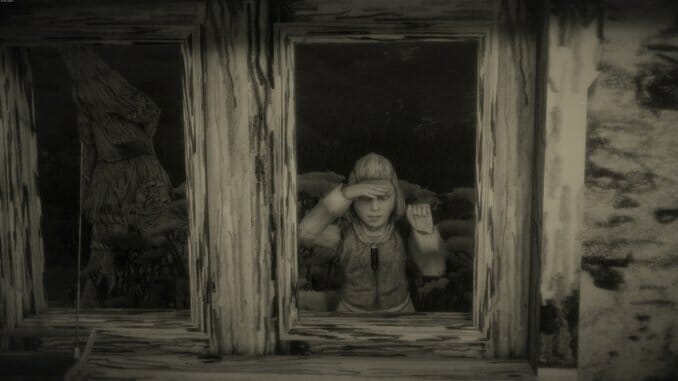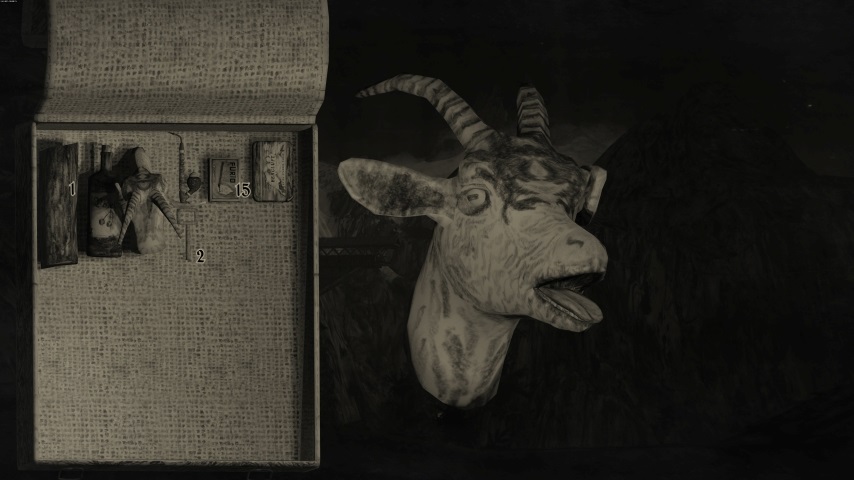Swiss Horror Game Mundaun Puts a Fresh Facade on an Otherwise Staling Formula
Games Features Mundaun
I’ve always been a fan of point-and-click horror games. I love those old atmospheric haunted house experiences where the player solves puzzles while reading notes and journals to piece together a story. But while the genre has progressed on a technical level since its earliest days—most of its descendants have abandoned the point-and-click aspect in favor of fully realized 3D spaces—story-wise, they haven’t evolved much at all. Often the same tired villains, themes, and jump scares turn a would-be thriller into a predictable, repetitive experience.
And then there’s Mundaun, a title that gave me many in-game firsts. It was the first time I’ve driven a hay baler. It was the first time I ran over a haystack monster. It was the first time I held the head of a goat as it bleated in my hands. The game takes place in the Swiss Alps. A young man returns to his family’s farm after his grandfather dies in a suspicious barn fire. Upon reaching the village, he finds the land abandoned, with a strange young girl and her two goats watching from a nearby cliff. The church and the village priest hold some answers, but in order to find out what happened, he must trek through the mountains, and, in doing so, learn of a macabre pact made with a devilish figure who has now returned for revenge.

Mundaun’s greatest strength is its source material, Swiss folklore. The format, which relies on exploration and puzzle-solving, isn’t particularly innovative, but the story it facilitates is cryptic and compelling enough to give it momentum. Its pacing is also wonderfully supported by how well the game blends together its exploration and scripted moments, balancing the two so fluidly that its bizarre events come together in a way that feels almost dreamlike. Its darker moments do not feel cinematically imposed on the player, but rather, that they are something that happens to—or with—them. The visuals, for example, often play on light and shadow in a way that relies on the player’s position in the room to progress the scene. Style-wise, its black and white color scheme, often used in similar games to soften rough visual edges (think 2014’s Betrayer), combined with hand-sketched textures (reminiscent of Disturbed from back in 2016), evokes the folksiness of a children’s storybook but channels a grim sparsity that supports its themes well.
Weirdly, it’s the copy on the game’s official website that sums up my one issue with Mundaun. Some of its conventions are so beneath it. Its description beckons you to “survive hostile encounters, drive vehicles, fill your inventory and solve a variety of hand-crafted puzzles.” All of these are basic game conventions and not particularly noteworthy, and in some cases, even unnecessary. It tells us what to expect from the mechanics of the game, but these features are functional, not transformative or illustrative. The game’s most appealing feature, its basis in Swiss folklore, doesn’t really need driving or shooting a gun to tell its story, no matter how much we’ve come to expect those in games. Which is not to say that the hay baler and the ancient war rifle featured in the game don’t have their place within the story, but rather, let a puzzle game be a puzzle game.
What makes Mundaun’s conventions less, well, mundane, is how unfamiliar and unpredictable its lore and imagery can be. Combined with the smart integration of its cinematic moments and its ability to make the player feel like part of key moments in the story, it puts a fresh facade on an otherwise staling formula. It’s the first game of its ilk to hold my attention in a long time.
Holly Green is the editor-at-large of Paste Games and a reporter and semiprofessional photographer. She is also the author of Fry Scores: An Unofficial Guide To Video Game Grub. You can find her work at Gamasutra, Polygon, Unwinnable, and other videogame news publications.